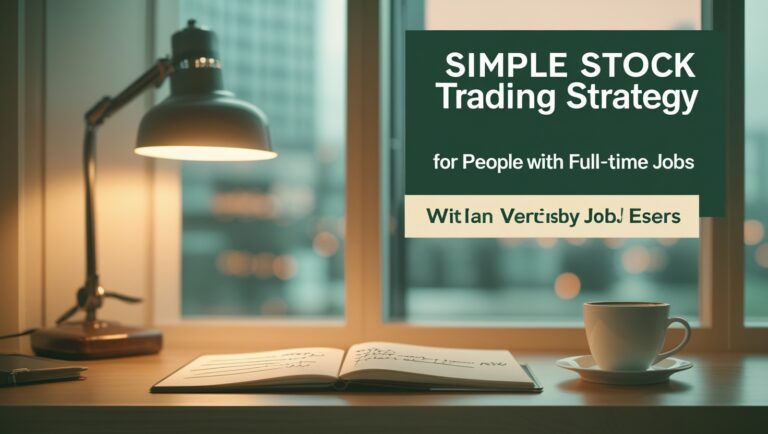Building a Retirement Portfolio with Target-Date Funds
Building a Retirement Portfolio with Target-Date Funds
Learn how target-date funds simplify retirement investing, help manage risk over time, and can grow wealth steadily. I share my personal approach to building a retirement portfolio using these funds and actionable tips for beginners.

Table of Contents
What Are Target-Date Funds?
Target-date funds are investment funds designed to automatically adjust their asset allocation as a specified retirement date approaches. They typically start with a higher allocation to stocks and gradually shift to bonds and other conservative assets.
I started using target-date funds because they simplify retirement investing. Instead of constantly rebalancing my portfolio, the fund does it automatically, which allows me to focus on other aspects of my financial life.
Why I Use Target-Date Funds
I use target-date funds for several reasons:
- Automatic rebalancing: The fund adjusts over time, reducing risk as retirement nears.
- Diversification: Target-date funds hold a mix of stocks, bonds, and other assets.
- Hands-off management: I don’t have to micromanage every allocation.
This approach helps me stay consistent with my retirement goals while minimizing the effort required.
How Target-Date Funds Work
Target-date funds are named for the year you plan to retire. For example, a 2050 target-date fund is intended for investors planning to retire around that year.
I choose a fund based on my expected retirement date and risk tolerance. Early in my career, I prefer a fund with higher equity exposure for growth, and as retirement approaches, it gradually shifts to more conservative assets.
Benefits I’ve Experienced
- Simplicity: One fund provides a diversified retirement portfolio.
- Automatic risk management: The fund adjusts allocation over time.
- Professional management: Fund managers handle asset selection and rebalancing.
Using target-date funds has allowed me to stay invested confidently without worrying about short-term market fluctuations.
Choosing the Right Fund
When selecting a target-date fund, I consider:
- Retirement horizon: Choose a fund that matches your planned retirement year.
- Expense ratio: Lower fees mean more money stays invested and compounds over time.
- Fund philosophy: Some funds are more aggressive or conservative than others, even with the same target date.
I usually compare several funds and pick the one that aligns with my risk tolerance and financial goals.
How I Integrate Target-Date Funds
I use target-date funds as the core of my retirement portfolio. I may complement them with ETFs or dividend-paying stocks to enhance growth or generate additional income.
By combining target-date funds with other investments, I maintain control and flexibility while letting the fund handle automatic rebalancing.
Automation and Contributions
I set up automatic contributions to my target-date fund each month. This ensures I consistently invest over time, leveraging dollar-cost averaging and compounding for long-term growth.
Automation also helps me stay disciplined, even during market volatility, which is essential for building retirement wealth.
Common Mistakes I Avoid
- Choosing a fund too aggressive or too conservative for my timeline
- Ignoring expense ratios and hidden fees
- Failing to diversify outside the target-date fund if needed for specific goals
- Reacting to short-term market fluctuations instead of sticking with the plan
By avoiding these mistakes, I ensure my retirement portfolio grows steadily and efficiently.
Real-Life Example
I invested in a 2045 target-date fund early in my career. Over the years, the allocation has gradually shifted from aggressive stocks to a more balanced mix, reducing risk as I approach mid-career.
This hands-off approach allows me to focus on other financial goals while knowing my retirement portfolio is being managed professionally.
Want My Full Retirement Strategy?
If you want to see exactly how I build a retirement portfolio using target-date funds, ETFs, and dividend strategies, I share my full system in my ebook: Pay Bills with Stocks.
I show step by step how I automate contributions, manage risk, and maximize compounding for long-term retirement success.
Final Thoughts
Target-date funds are a powerful tool for simplifying retirement investing. By selecting the right fund, staying consistent, and complementing it with other strategies, I’ve been able to build a portfolio that grows steadily and aligns with my long-term goals.
For a detailed guide on building your own retirement portfolio efficiently, check out my ebook: Pay Bills with Stocks.
One of the first things I realized is that target-date funds reduce the stress of constant portfolio management. Instead of worrying about when to rebalance, the fund automatically adjusts allocations for me.
I often complement my target-date fund with broad-market ETFs. This allows me to capture additional growth while maintaining the fund’s automatic risk management.
Automation is key. I set up monthly contributions, ensuring I consistently invest over time and take advantage of dollar-cost averaging.
I also review my fund’s expense ratios regularly. Even small differences can compound over decades, so I prioritize low-cost options to maximize long-term growth.
I’ve learned to avoid chasing overly aggressive funds. While higher stock exposure can mean higher returns, it also increases volatility, which can hurt my confidence and discipline.
Target-date funds also provide diversification across asset classes and sectors, which is essential for long-term stability. This has allowed me to weather market downturns without panic selling.
I make it a habit to track the fund’s glide path, which shows how asset allocation changes over time. Understanding this helps me anticipate when the fund will become more conservative as I approach retirement.
Sometimes I use target-date funds in taxable accounts alongside retirement accounts. This gives me flexibility while keeping most of my growth tax-advantaged.
Behavioral discipline is crucial. By sticking with a target-date fund, I avoid emotion-driven trading and stay focused on long-term goals rather than short-term market swings.
I also integrate target-date funds with other income strategies, like dividend ETFs, to supplement growth with passive income streams that compound over time.
I periodically review my portfolio to ensure it aligns with my risk tolerance and life changes, such as a new job, family planning, or changes in retirement goals.
I’ve noticed that starting early with target-date funds magnifies the power of compounding. Even small contributions grow substantially over decades.
I use target-date funds to simplify retirement planning. Instead of juggling multiple accounts and allocations, I have a single core investment that adapts automatically.
Even as I explore other investment strategies, target-date funds remain my anchor for retirement savings, providing stability and predictable growth.
Finally, if you want to see exactly how I build a retirement portfolio with target-date funds, automate contributions, and grow wealth over time, I share my full system in my ebook: Pay Bills with Stocks. It’s the exact method I personally use to create a hands-off, efficient, and profitable retirement strategy.

Stay ahead in the stock market! Subscribe to our newsletter and receive exclusive stock flow reports, trading insights, and actionable tips directly in your inbox. Join thousands of traders who get our updates first.







